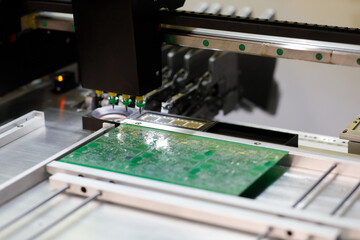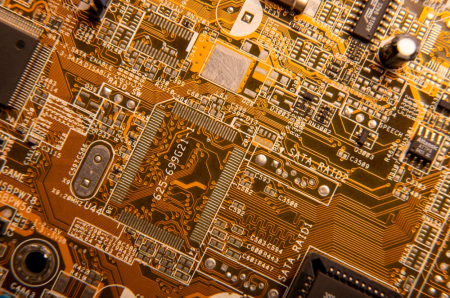- +86-755-23012705
- Building 3, Jinfeng Industrial Park, Fuyong Street, Baoan District, Shenzhen ,China
- [email protected]
Surface Mount Technology (SMT) has revolutionized the way electronic components are assembled onto printed circuit boards (PCBs). While SMT offers numerous advantages, such as higher component density and improved reliability, the prototype production phase often presents a unique set of challenges. In this blog, we will explore the various difficulties encountered during SMT prototype production and discuss strategies to mitigate these issues.
One of the primary challenges in SMT prototype production is the complexity of modern electronic designs. With advancements in technology, devices are becoming increasingly intricate, featuring high-density layouts with multiple components packed closely together. This complexity can lead to issues such as signal integrity problems, thermal management concerns, and potential short circuits. To address these challenges, engineers must use sophisticated design tools and adhere to best practices in PCB layout. Conducting thorough simulations and reviews during the design phase can help identify potential pitfalls before the production stage.

The rapid pace of technological advancement often means that components used in designs can become obsolete or difficult to source. This creates challenges in ensuring that the right components are available for prototype production. A last-minute change in a component’s availability can lead to delays and additional costs. To mitigate this risk, it is essential to conduct thorough market research and establish relationships with multiple suppliers. Maintaining an updated Bill of Materials (BOM) that includes alternative components can also provide flexibility in sourcing.
Applying solder paste accurately is crucial for ensuring a successful SMT assembly. However, the process can be fraught with challenges. Inconsistent paste application can lead to defects such as insufficient solder, solder bridges, or tombstoning (where one end of a component lifts off the board). Achieving the right stencil thickness and ensuring proper alignment during the printing process is essential. Regular maintenance and calibration of solder paste printers can help improve accuracy and reduce defects.
Precision in component placement is vital in SMT production. Automated pick-and-place machines are used to position components on the PCB, but variations in alignment can lead to assembly issues. This is particularly challenging when dealing with high-density layouts. To enhance placement accuracy, manufacturers can employ advanced machine vision systems that verify component positioning in real-time. Additionally, investing in high-quality pick-and-place equipment can significantly improve placement reliability.

Reflow soldering is a critical step in SMT production, and achieving the correct temperature profile is essential for successful soldering. Variations in heating and cooling rates can lead to defects such as cold solder joints or thermal damage to components. Developing an optimal reflow profile requires careful consideration of the materials used, component types, and PCB design. Regular monitoring and adjustments of reflow oven settings can help ensure consistent results.
Quality control is paramount in SMT prototype production. Identifying defects early in the process can save time and resources. However, the compact nature of SMT assemblies makes inspection and testing more challenging. Automated Optical Inspection (AOI) systems can be employed to detect surface-level defects, but more complex issues may require additional testing methods, such as X-ray inspection for hidden solder joints. Implementing a comprehensive testing strategy that includes both functional and visual inspections can help ensure high-quality prototypes.
In today’s fast-paced market, the demand for rapid prototyping is ever-increasing. Companies strive to shorten development cycles while maintaining quality. This pressure can lead to mistakes if proper protocols are not followed. To balance speed with accuracy, organizations should adopt agile methodologies, allowing for iterative testing and design adjustments throughout the prototyping phase. This approach helps teams respond quickly to feedback while ensuring that quality is not compromised.

SMT prototype production presents several challenges, from design complexity and component selection to solder paste application and quality control. However, with careful planning, investment in advanced technologies, and a focus on best practices, these challenges can be effectively managed. By addressing these issues proactively, manufacturers can enhance their prototype production processes, reduce time-to-market, and ultimately deliver higher-quality products to their customers. Embracing continuous improvement and learning from each prototype iteration will further strengthen the ability to overcome obstacles and achieve success in the ever-evolving electronics landscape.
Make Your PCB Dreams a Reality with XPCB Limited
XPCB Limited is your go-to partner for turning your PCB dreams into reality. Our streamlined PCB manufacturing process, combined with quick-turnaround prototyping and turnkey PCBA services, ensures that your projects come to life with ease. Trust in our expertise and dedication to quality as we help you achieve your PCB goals. Join us and experience the difference with XPCB Limited.






XPCB Limited is a premium PCB & PCBA manufacturer based in China.
We specialize in multilayer flexible circuits, rigid-flex PCB, HDI PCB, and Rogers PCB.
Quick-turn PCB prototyping is our specialty. Demanding project is our advantage.
Tel : +86-136-3163-3671
Fax : +86-755-2301 2705
Email : [email protected]
© 2024 - XPCB Limited All Right Reserve
